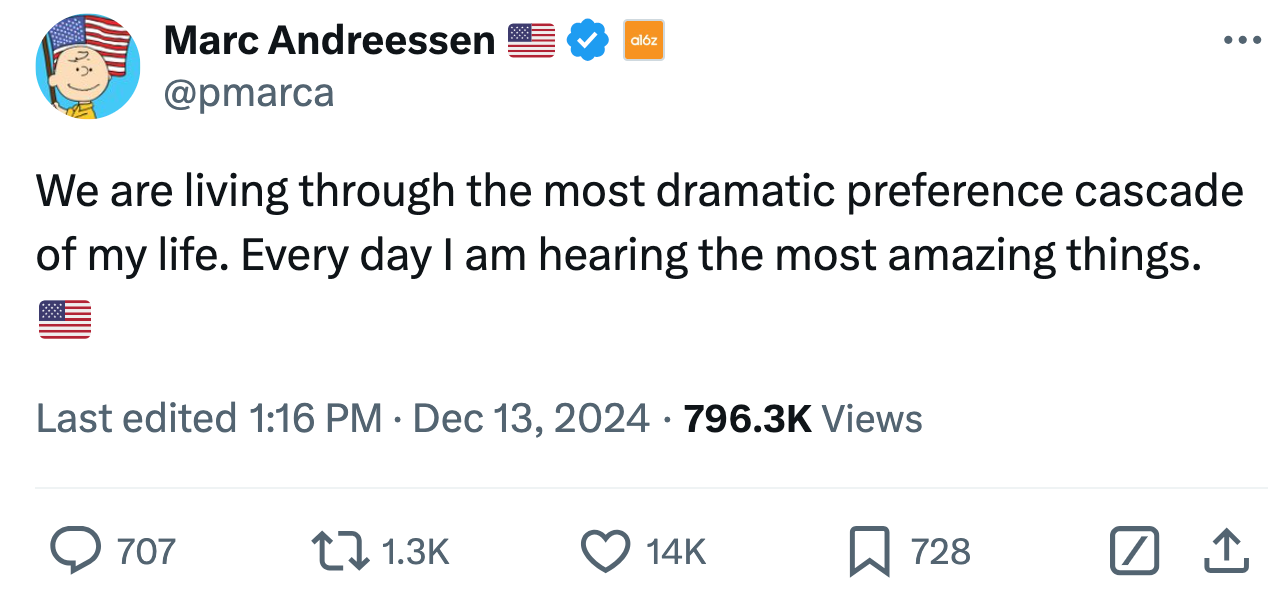The real leftist threat?
Mirror cells with left- rather than right-twisting DNA sound like the antimatter of life. Are they a new candidate for the cause of Fermi's Paradox?
Here’s something new to worry about: the potential for scientists to gin up the biological equivalent of antimatter, Vonnegut’s apocalyptic ice-nine, or Chrichton’s Andromeda Strain: mirror microbes in which DNA comes with a left-hand twist instead of the right-hand twist found in all the living cells on Earth. Suddenly, scientists are worrying that within a few decades they, personally, could kill everybody on the planet, man, beast, and plant.
I’ll put the paywall here:
From a Department of Energy write-up on why it funds research into antimatter that annihilates matter on contact.
These anti-particles can combine to form anti-atoms and, in principle, could even form anti-matter regions of our universe. Scientists believe that these anti-matter regions would have the same physics, chemistry, and other properties. Scientists haven’t seen anti-matter regions in our universe, but they have created copious amounts of antiparticles in particle accelerators and even created anti-elements and anti-atoms. We also know about antimatter from the anti-particles that cosmic ray collisions create. Some types of radioactivity also produce antimatter.
Why isn’t antimatter everywhere? When matter and antimatter meet, they annihilate each other, releasing energy. That leads us to the biggest mystery about antimatter. Scientific theories predict that the Big Bang should have created the same amount of matter and antimatter. But if that were true, all the matter and antimatter would have destroyed each other. That would mean there wouldn’t be any matter in the universe to create stars, planets, or people. Physicists believe that there was one extra matter particle for every billion matter-antimatter pairs. This is more than can be explained by the Standard Model, so scientists are working to understand why. …
Why is there slightly more matter than antimatter? That doesn’t seem as elegantly symmetrical as there being equal amounts of matter and antimatter.
An Occam’s Razorite explanation might be that the Creator wanted there to be something rather than nothing.
Rather than posit two entities, Creation and its Creator, many thinkers prefer lately to posit the existence of either a vastly large or an infinite number of universes with an array of different physical laws. In this Multiple Universes theory, we just happened to be lucky enough to live in a universe with the physics equivalent of Good Schools.
Could be.
Antimatter may seem impossibly far from daily lives. But ordinary bananas produce antimatter, releasing one positron—the antimatter equivalent of an electron—about every 75 minutes.
So we can get along okay with a little bit of antimatter in our corner of the universe. But mirror microbes, unlike antimatter subatomic particles, would be alive.
And life finds a way.
From the New York Times science section:
A ‘Second Tree of Life’ Could Wreak Havoc, Scientists Warn
Research on so-called mirror cells, which defy fundamental properties of living organisms, should be prohibited as too dangerous, biologists said.
By Carl Zimmer
Dec. 12, 2024
On Thursday, 38 prominent biologists issued a dire warning: Within a few decades, scientists will be able create a microbe that could cause an unstoppable pandemic, devastating crop losses or the collapse of entire ecosystems.
The scientists called for a ban on research that could lead to synthesis of such an organism.
“The consequences could be globally disastrous,” said Jack W. Szostak, a Nobel-prize-winning chemist at the University of Chicago who helped write a 299-page technical report on the risks of the research.
In an accompanying commentary in the journal Science, Dr. Szostak and his colleagues warned that an organism created with the new technology could cause “extraordinarily damaging consequences for the environment, agriculture, and human well-being.”
To make such a microbe, scientists would have to build a cell that defied one of the fundamental properties of life on Earth. The molecules that serve as the building blocks of DNA and proteins typically exist in one of two mirror-image forms. But living cells rely on just one form.
Our DNA, for example, has a backbone made partly of sugar. While sugar molecules can exist in left- and right-handed forms, DNA only uses the right-handed molecules.
That’s the reason DNA’s double helix has a right-handed twist. Our proteins, by contrast, are made of left-handed amino acids. This combination is found not just in humans, but in every species on Earth.
Scientists are still debating how evolution landed on this arrangement. In theory, a mirror cell — with left-handed DNA and right-handed proteins — could carry out all the biochemical reactions required to stay alive.
But as far as biologists can tell, mirror cells do not exist. At least, not yet. …
But chemists have been working on it. They figure they are 10 to 30 years from constructing a living mirror cell.
The trouble with mirror cells is that they could probably evade most of the barriers that keep ordinary organisms in check. To fight off pathogens, for example, our bodies must first detect them with molecular sensors.
Those sensors can only latch onto left-handed proteins or right-handed DNA and RNA. A mirror cell that infected lab workers might spread through their bodies without triggering any resistance from their immune systems.
There wouldn’t be many organic molecules inside a human body for a mirror cell to feed on. But Dr. Cooper and his colleagues suspect that it might find enough to grow slowly. And if the immune system did not detect the growing infection, it could spread without limit. …
Unchecked, mirror cells could come to dominate entire ecosystems.
You might be able to gin up mirror antibiotics to save humans, but what about animals, such as all the fish in the sea?
What about all the plants?
And what happens when the mirror life mutates?
… As a result of these conversations, Dr. Adamala and her colleagues decided to abandon their work on mirror cells. “We’re saying, ‘We’re not going to do it,’” she said.
How to prevent others from doing it is an open question, one that the scientists plan to address at larger meetings in 2025. “It is important that before the beast is in our face, we have a chance to think through it collectively,” Dr. Agashe said.
Good thinking.
I suspect some readers are wondering why, now that many are proclaiming a historic vibe shift in favor of what I’ve been saying all along,
that I’m not gleefully hammering away on political questions, gloating all the time.
Why instead am I writing about woolly mammoths and Unitarian stereotypes and the like?
Well, because I feel like I now can. I worked really hard during the 10 to 12 years of the Great Awokening to point out that the Establishment was going mad. It seemed like my duty.
Now that sanity and liberty appear to be creeping back into fashion, in small part due to my efforts over many years, I’m enjoying the opportunity to write more about subjects less tied to The Struggle.
But, don’t worry, I’ll still dish up plenty of red meat when it’s called for.






Steve,
Your change in direction is well deserved. Have fun and keep up the good work. You will contribute to a better society regardless of the direction(s) you choose. Thomas Sowell is in his 90's and still graces us with his wisdom from time to time. Not a bad model.
Ken
"The trouble with mirror cells is that they could probably evade most of the barriers that keep ordinary organisms in check. To fight off pathogens, for example, our bodies must first detect them with molecular sensors.
Those sensors can only latch onto left-handed proteins or right-handed DNA and RNA. A mirror cell that infected lab workers might spread through their bodies without triggering any resistance from their immune systems."
granted they have had more time to think about this than I have, but I don't think this is correct. I could be missing something, but the sensors of the immune system, antibodies, T-cell receptors , they grab onto things based on things like size and shape and where charges are and where hydrogens stick out and so forth. I'm pretty sure they can even stick to things that are neither protein nor DNA as long as those requirements are met.
Would such an organism evade the immune system? Initially I would think, just as any novel organism with novel antigens would, but the immune system can make a staggering number of different antibodies. It only spins up ones that have stuck to things before, but I'm pretty sure it could potentially train against proteins made from mirror amino acids.
The mirror organisms would have more of a problem properly invading because it wouldn't have any way to latch on to any receptors on human or animal cells. For example COVID spike protein would bind ACE2 receptors to enter a cell. If the immune system can't bind to mirror spike protein, mirror spike protein definitely can't bind to regular ACE2 receptor.
That isn't even taking account of the fact that such experimental organisms wouldn't have time to evolve such a spike protein.
Seems to me these mirror organisms would just flounder about with no special abilities and get taken out by the non specific immunity functions of the animals.
But, like I said, they've had more time to research and think this through. I could be missing a lot. Doesn't mean we should try making these critters.
Why ask for trouble?